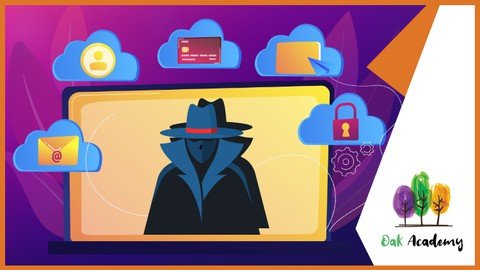What you’ll learn
- Ethical hacking involves a hacker agreeing with an organization or individual who authorizes the hacker to levy cyber attacks on a system or network to expose potential vulnerabilities. An ethical hacker is also sometimes referred to as a white hat hacker. Many depend on ethical hackers to identify weaknesses in their networks, endpoints, devices, or applications. The hacker informs their client as to when they will be attacking the system, as well as the scope of the attack. An ethical hacker operates within the confines of their agreement with their client. They cannot work to discover vulnerabilities and then demand payment to fix them. This is what gray hat hackers do. Ethical hackers are also different from black hat hackers, who hack to harm others or benefit themselves without permission.
- Ethical hacking is a good career because it is one of the best ways to test a network. An ethical hacker tries to locate vulnerabilities in the network by testing different hacking techniques on them. In many situations, a network seems impenetrable only because it hasn’t succumbed to an attack in years. However, this could be because black hat hackers are using the wrong kinds of methods. An ethical hacker can show a company how they may be vulnerable by levying a new type of attack that no one has ever tried before. When they successfully penetrate the system, the organization can then set up defenses to protect against this kind of penetration. This unique security opportunity makes the skills of an ethical hacker desirable for organizations that want to ensure their systems are well-defended against cybercriminals.
- In addition to proficiency in basic computer skills and use of the command line, ethical hackers must also develop technical skills related to programming, database management systems (DBMS), use of the Linux operating system (OS), cryptography, creation and management of web applications and computer networks like DHCP, NAT, and Subnetting. Becoming an ethical hacker involves learning at least one programming language and having a working knowledge of other common languages like Python, SQL, C++, and C. Ethical hackers must have strong problem-solving skills and the ability to think critically to come up with and test new solutions for securing systems. Ethical hackers should also understand how to use reverse engineering to uncover specifications and check a system for vulnerabilities by analyzing its code.
- Many hackers use the Linux operating system (OS) because Linux is a free and open-source OS, meaning that anyone can modify it. It’s easy to access and customize all parts of Linux, which allows a hacker more control over manipulating the OS. Linux also features a well-integrated command-line interface, giving users a more precise level of control than many other systems offer. While Linux is considered more secure than many other systems, some hackers can modify existing Linux security distributions to use them as hacking software. Most ethical hackers prefer Linux because it’s considered more secure than other operating systems and does not generally require the use of third-party antivirus software. Ethical hackers must be well-versed in Linux to identify loopholes and combat malicious hackers, as it’s one of the most popular systems for web servers.
- Ethical hacking is legal because the hacker has full, expressed permission to test the vulnerabilities of a system. An ethical hacker operates within constraints stipulated by the person or organization for which they work, and this agreement makes for a legal arrangement. An ethical hacker is like someone who handles quality control for a car manufacturer. They may have to try to break certain components of the vehicle such as the windshield, suspension system, transmission, or engine to see where they are weak or how they can improve them. With ethical hacking, the hacker is trying to “break” the system to ascertain how it can be less vulnerable to cyberattacks. However, if an ethical hacker attacks an area of a network or computer without getting expressed permission from the owner, they could be considered a gray hat hacker, violating ethical hacking principles.
- The different types of hackers include white hat hackers who are ethical hackers and are authorized to hack systems, black hat hackers who are cybercriminals, and grey hat hackers, who fall in-between and may not damage your system but hack for personal gain. There are also red hat hackers who attack black hat hackers directly. Some call new hackers green hat hackers. These people aspire to be full-blown, respected hackers. State-sponsored hackers work for countries and hacktivists and use hacking to support or promote a philosophy. Sometimes a hacker can act as a whistleblower, hacking their own organization in order to expose hidden practices. There are also script kiddies and blue hat hackers. A script kiddie tries to impress their friends by launching scripts and download tools to take down websites and networks. When a script kiddie gets angry at…
- Whether you want to get your first job in IT security, become a white hat hacker, or prepare to check the security of your own home network, Udemy offers practical and accessible ethical hacking courses to help keep your networks safe from cybercriminals
- Penetration testing skills make you a more marketable IT tech. Understanding how to exploit servers, networks, and applications means that you will also be able to better prevent malicious exploitation. From website and network hacking, to pen testing in Python and Metasploit, Udemy has a course for you.
- There are many types of penetration testing. Internal penetration testing tests an enterprise’s internal network. This test can determine how much damage can be caused by an employee. An external penetration test targets a company’s externally facing technology like their website or their network. Companies use these tests to determine how an anonymous hacker can attack a system. In a covert penetration test, also known as a double-blind penetration test, few people in the company will know that a pen test is occurring, including any security professional. This type of test will test not only systems but a company’s response to an active attack. With a closed-box penetration test, a hacker may know nothing about the enterprise under attack other than its name. In an open-box test, the hacker will receive some information about a company’s security to aid them in the attack.
- Penetration tests have five different stages. The first stage defines the goals and scope of the test and the testing methods that will be used. Security experts will also gather intelligence on the company’s system to better understand the target. The second stage of a pen test is scanning the target application or network to determine how they will respond to an attack. You can do this through a static analysis of application code and dynamic scans of running applications and networks. The third stage is the attack phase, when possible vulnerabilities discovered in the last stage are attacked with various hacking methods. In the fourth stage of a penetration test, the tester attempts to maintain access to the system to steal any sensitive data or damaging systems. The fifth and final stage of a pen test is the reporting phase, when testers compile the test results.
- Penetration testing, or pen testing, is the process of attacking an enterprise’s network to find any vulnerabilities that could be present to be patched. Ethical hackers and security experts carry out these tests to find any weak spots in a system’s security before hackers with malicious intent find them and exploit them. Someone who has no previous knowledge of the system’s security usually performs these tests, making it easier to find vulnerabilities that the development team may have overlooked. You can perform penetration testing using manual or automated technologies to compromise servers, web applications, wireless networks, network devices, mobile devices, and other exposure points.
- Setting Up The Laboratory
- Install Kali Linux – A Penetration Testing Operating System
- Install Windows & Vulnerable Operating Systems as Virtual Machines For Testing
- Discover vulnerable applications
- Vulnerability scanning,
- Exploit, Post Exploit
- Gain Control Over Computer Systems Using Server Side Attacks
- Exploit Vulnerabilities to Gain Control Over Systems
- Gatheri Password Hashes
- Cracking Passwords
- Learn Free Web App Hacking Tools
- The Very Latest Up-To-Date Information and Methods
How to Enroll Become Ethical Hacker in 15 Hours – | Ethical Hacking 2021 course?
How many members can access this course with a coupon?
Become Ethical Hacker in 15 Hours – | Ethical Hacking 2021 Course coupon is limited to the first 1,000 enrollments. Click 'Enroll Now' to secure your spot and dive into this course on Udemy before it reaches its enrollment limits!









